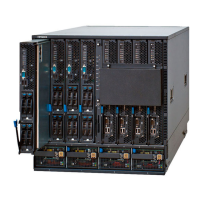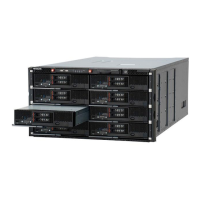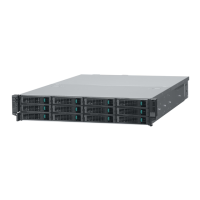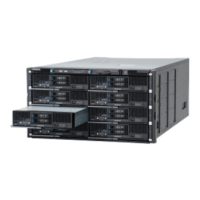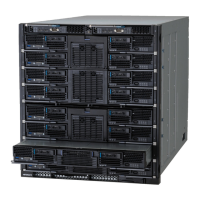Why can't I use remote FD or USB flash memory on Hitachi Compute Blade 2500 OS X?
- MMatthew RussellSep 23, 2025
The Virtual Media console for OS X does not support the remote FD and USB flash memory.
Why can't I use remote FD or USB flash memory on Hitachi Compute Blade 2500 OS X?
The Virtual Media console for OS X does not support the remote FD and USB flash memory.
How to fix Hitachi Server remote console not starting?
To resolve the issue of the remote console not starting, ensure that a supported Java VM is installed on the system console. Verify that HTTP communication via TCP port 80 and HTTPS communication via TCP port 443 is available between the system console and the server blade. Also, confirm that communication via TCP port 5001 is available. If using Oracle Java Version 7 Update 21 or later, check the Java security settings. As an alternative, you can omit the certificate invalidation check to shorten the startup time of the CD/DVD image creation tool.
How to start Hitachi Compute Blade 2500 Server remote console on Internet Explorer?
If the remote console or virtual media console does not start when using Internet Explorer 8 or later, disable the SmartScreen filter functionality.
What to do if Hitachi Server remote console cannot be started and displays 'xxxx cannot be downloaded'?
If you receive the message "xxxx cannot be downloaded" and the remote console fails to start, go to Internet Explorer, click Tools, select Internet Options from the menu. In the dialog box, click the Advanced tab and ensure that the Do not save encrypted pages to disk check box is not selected.
What to do if keystrokes are not entered or continue without stopping in Hitachi Compute Blade 2500 Server remote console?
If keystrokes continue to be entered without stopping, or are not entered at all when using the remote console, deactivate the remote console window using the mouse, and then re-activate the window. If the problem persists, exit and restart the remote console.
Why can't Hitachi Server FD data be read when multiple servers are connected?
If multiple server blades are connected remotely to the FD drive on the system console, and the data from the FD cannot be read correctly, only one server blade can be connected remotely to each device at any given time.
What to do if Hitachi Compute Blade 2500 FD data cannot be read after changing?
If the FD is changed when remotely connected to the FD drive on the system console, and the data from the newly- inserted FD cannot be read correctly, terminate the remote connection, change the media, and then resume the remote connection to the drive again.
How to start Hitachi Compute Blade 2500 Server remote console with IPv6 addresses?
If you want to use the remote console in an IPv6 environment, use Oracle Java Version 7 Update 80 or later, or Oracle Java Version 8 Update 45 or later.
What to do when Hitachi Compute Blade 2500 Server displays 'The max number of session has been reached'?
If the message "The max number of session has been reached" is displayed on the remote screen and a connection cannot be established with the server blade, wait until the other connection is finished. If you can safely terminate the connection forcefully, execute the disconnect blade bmc session command.
Why does the cursor not respond to mouse input on Hitachi Compute Blade 2500?
If the cursor on the operating system of a remotely connected server blade does not respond to mouse input, verify that the mouse mode setting is supported by the operating system of the server blade. If the problem persists, switch to a different mouse mode and then revert to the correct mode. If the problem still persists, restart the remote console.
| Form Factor | Blade |
|---|---|
| Processor | Intel Xeon |
| Operating System Support | Windows Server, Linux |
| Memory | Up to 192 GB per blade (DDR3) |
| Storage | SAS/SATA HDD/SSD per blade |
| Network Interfaces | 10Gb Ethernet |
| Product Type | Blade Server |
Overview of the CB 2500 server chassis and modules.
Details performance expansion types and key features of CB 2500 server blades.
Explains the role and functionality of the management module in the system.
Describes the internal LAN and management LAN for system communication.
Lists hardware and software requirements for the system console.
Outlines the general steps for initial setup of the CB 2500 system.
Describes the server chassis, its slots, and ID tag.
Describes slots and location tags for installing blades and modules.
Details the appearance of a full-wide blade, its slots, and connectors.
Details the appearance of a half-wide blade, its slots, and indicators.
Details the appearance of the management module, its connectors, and indicators.
Describes the appearance of the management LAN module.
Describes the appearance of the switch module.
Details the appearance of the power supply module, its connectors, and indicators.
Details the appearance of the fan module, its indicators.
Describes how to connect the system unit to the power supply.
Explains how to prepare the system console for CB 2500 configuration.
Explains how to connect the system console to the management module.
Describes the procedure for logging into the management module.
Guides on changing the administrator password for security.
Explains how to set the chassis ID for identifying system units.
Details changing network addresses for system components.
Guides on preparing server blades for Logical Partitioning (LP) mode.
Explains powering on a server blade using Web, CLI, or remote console.
Explains how to reset the power of a server blade via management module.
Guides on restarting the BMC of a server blade if a failure occurs.
Guides on configuring the Unified Extensible Firmware Interface (UEFI) for a server blade.
Describes how to power off a running server blade.
Explains how to forcibly power off a server blade when OS is unresponsive.
Details how to power off a switch module.
Explains how to power off the entire server chassis.
Provides important notes and considerations for using the remote console.
Describes how to start the remote console.
Lists available functions and commands for the remote console.
Guides on creating disk images for OS or application installation.
Explains how to properly exit the remote console.
Lists and explains common screen messages encountered with the remote console.
Provides procedures for troubleshooting remote console issues.
Explains how to issue an NMI to the OS on a server blade.
Details the physical and environmental specifications of the server chassis.
Provides specifications for different CB 2500 server blade models.
Details the specifications for 1/10Gb LAN and Brocade 10Gb DCB switch modules.
Lists the specifications of the 2500W power supply module.
Details the specifications of the cooling fan modules.
Guides on taking memory dumps in Windows operating systems.
Explains how to take memory dumps in Linux operating systems.
Details the procedure for taking memory dumps in VMware environments.
Provides a schedule for cleaning tasks and their intervals.
Explains how to clean ventilation holes using a cloth or vacuum.
Describes the service life of major hardware components.
Outlines the end user license terms for the CB 2500 firmware.

